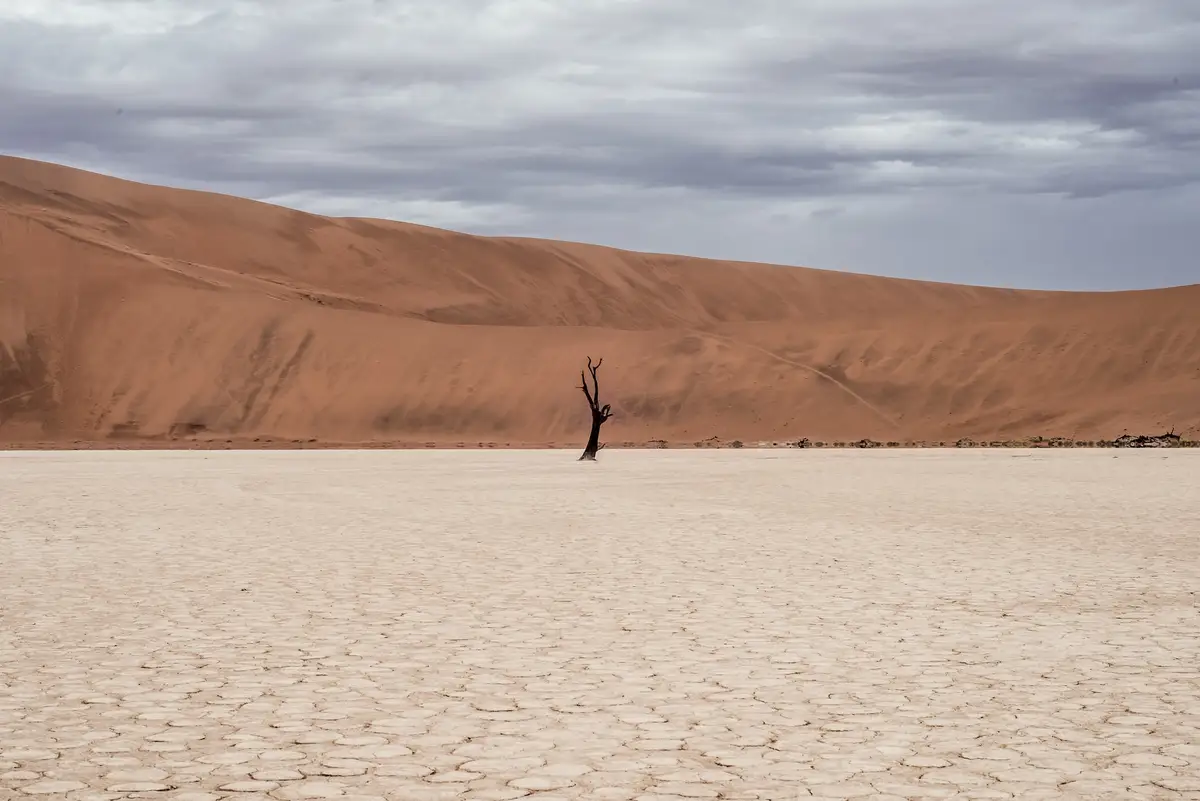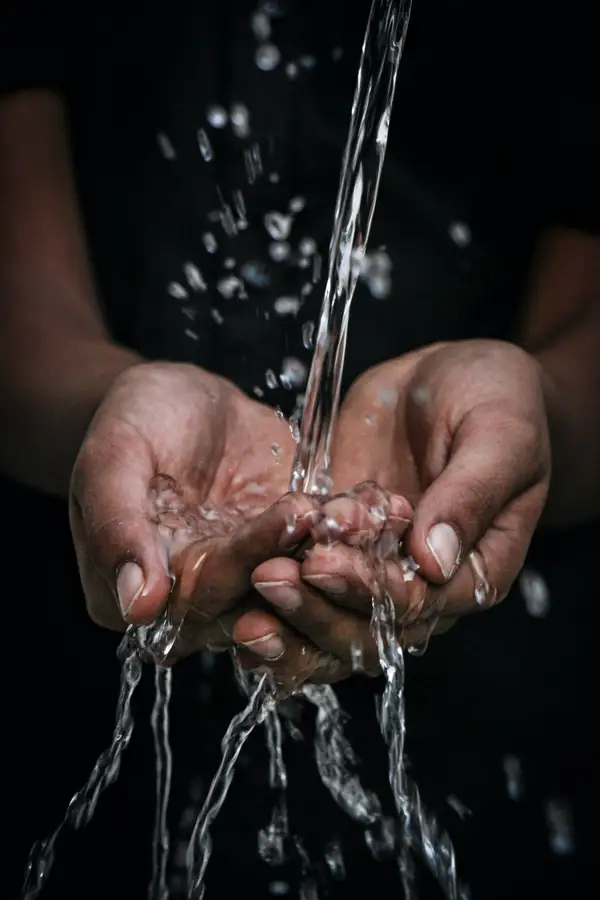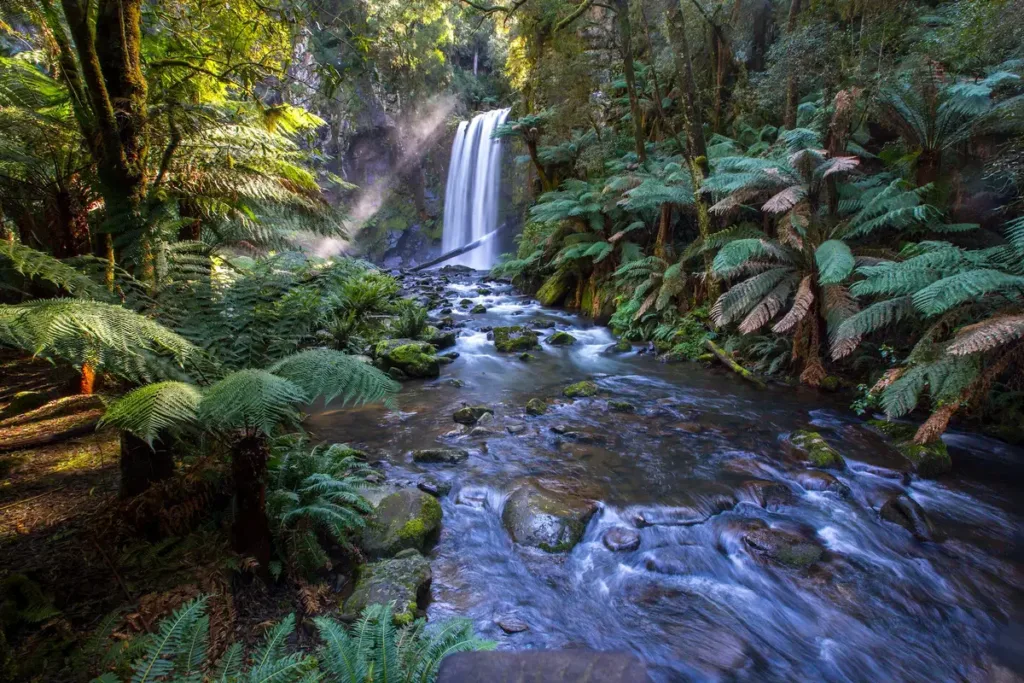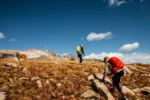How to use a limited water supply efficiently – 5 strategies
This post may contain affiliate links. This means that we may receive a small commission from purchases through those links. Read more in our affiliate disclosure.
Water, the fundamental elixir of life, becomes even more critical when you’re pushing your physical boundaries against the backdrop of nature. But what happens when this precious resource is in short supply? How can you make the most out of the water you have on your hike?
Dealing with a limited water supply effectively requires thoughtful planning and smart practices. First, it’s crucial to ration your available water, consuming just enough to maintain basic function without depleting your supplies prematurely. Optimize your food choices to maintain hydration—include high-water-content foods, limit salty and sugary items, keep protein intake moderate, and avoid diuretics like caffeine and alcohol. Actively manage your body temperature to minimize sweating by utilizing shade, lightweight clothing, and rest during peak heat. Look for emergency water sources like forest streams, morning dew, or snow.

- Introduction
- Your Body’s Need for Water
- 5 Strategies to make the most out of limited Water
- Focus on avoiding moderate or severe dehydration
- Only Drink When Thirsty to ration water
- Preserve Sweat, not water – Keep cool in other ways.
- Choose Lightweight, Light-Colored Clothing
- Cover Up
- Avoid Sun Peaks and Move during cooler times of day
- Go Slow
- Stay in the Shade
- Use Cooling Accessories
- Eat Light
- Don’t use drinking Water for Cooling
- Choose the Right Foods When Your Water Supply is Limited
- Eat Sparingly
- Opt for High Water Content Foods
- Keep Salty Foods to a Minimum
- Limit Sugary Foods
- Watch Your Protein Intake
- Avoid Alcohol and Caffeine
- Emergency Water Sources
- How to re-hydrate after a period of dehydration
- Conclusion
Your Body’s Need for Water
As your most loyal partner on any hike, your body has its unique language of expressing its needs. It tells you when to take a breather, when to push harder, and—crucially—when to take a sip of water. Let’s start by decoding this language and understanding why water is so crucial during physical exertion.
When you’re hiking, your body is constantly in a state of exertion, firing up your metabolic processes. Water acts as a coolant to keep your internal machinery from overheating. It regulates your body temperature by redistributing heat from your active muscles and expelling it through sweat. The evaporation of this sweat from your skin’s surface dissipates heat and cools you down—a mechanism akin to a car radiator.
Simultaneously, water serves as a transport medium, delivering essential nutrients to your working muscles and carrying away waste products to be excreted. It lubricates your joints, reducing the friction that can lead to painful conditions like arthritis or tendonitis.
The precise amount of water your body requires while hiking depends on numerous factors, including the intensity and duration of your hike, the environmental conditions (temperature, altitude, humidity), your age, sex, and individual metabolic rate. Generally, a hiker should aim to consume around half a liter to a liter of water per hour of moderate activity in moderate conditions, but this can vary.
Sometimes, however, you might find yourself in a situation where water supply is limited—maybe you forgot to pack the backup water bottle, or maybe the source you planned to refill your reservoirs dried up—and you cannot drink the ideal amount of water, resulting in some level of dehydration.
Stages of dehydration
Dehydration can be categorized into different stages based on severity: mild, moderate, and severe dehydration. Each stage comes with its own signs and potential health risks.
1. Mild Dehydration:
Mild dehydration can begin to occur after just 2% fluid loss. At this stage, symptoms are often mild and can be easily overlooked. They can include:
- Thirst
- Dry mouth
- Fatigue
- Less frequent urination
- Dark yellow urine
The main danger at this stage is the potential for escalation if not addressed. Mild dehydration can easily turn into moderate or severe dehydration if fluid intake is not increased.
Chronic mild dehydration also carries the risk of developing kidney stones, urinary tract infections, or hypertension, so you should avoid it as much as long as you have the option.
2. Moderate Dehydration:
Once you’ve lost about 5% of your body water, you may begin to experience symptoms of moderate dehydration:
- Very dry mouth and skin
- Sleepiness or fatigue
- Headache
- Dizziness or lightheadedness
- Few or no tears when crying
- Minimal urination, and any urine is darker than usual
This level of dehydration can start to significantly affect your bodily functions. Performance and cognitive ability may start to decline, and the risk of heat-related illnesses, like heat cramps or heat exhaustion, begins to increase.
3. Severe Dehydration:
Severe dehydration is a medical emergency and occurs at around 10-15% fluid loss. Symptoms include:
- Extreme thirst
- Irritability and confusion
- Very dry mouth, skin, and mucous membranes
- Lack of sweating
- Little or no urination
- Shriveled and dry skin
- Low blood pressure
- Rapid heartbeat and breathing
- Fever
- In the most severe cases, delirium or unconsciousness
Severe dehydration can lead to serious complications like heat stroke, kidney failure, seizures, and hypovolemic shock (a life-threatening condition caused by a significant drop in blood volume). Without rapid rehydration, severe dehydration can be fatal.
How to check for dehydration
Urine Color
One of the simplest ways to check your hydration status is by looking at the color of your urine. Light, pale yellow urine generally indicates good hydration. Dark yellow or amber-colored urine can be a sign of dehydration.
Skin Turgor Test
To perform the skin turgor test, pinch the skin on the back of your hand, lower arm, or abdomen between two fingers so that it’s lifted for a few seconds, then let go. In a well-hydrated person, the skin quickly returns to its normal position. If you’re dehydrated, the skin might take a few seconds to return to normal. This happens because dehydration decreases skin elasticity.
Skin turgor is also affected by age and other factors; generally, the older you are, the less elastic your skin will be. To make this test more accurate for you, perform it when you know that you’re well-hydrated, and take note how long your skin takes to return to its normal position.
You can even count it out to make the skin turgor test more informative: For example, pinch the skin of your middle finger knuckle for a count of five, then count how long it takes to return to normal. Then, to test your hydration level while on the trail, pinch the same patch of skin for a count of five, and compare.
Prevent negative effects of mild dehydration
The risks of mild dehydration can be migitated by avoiding certain foods which put extra strain on your kidneys:
- Reduce Sodium Intake: A high-sodium diet can trigger kidney stones because it increases the amount of calcium your kidneys must filter, thus increasing the risk of stones. Of course, you need to replenish electrolytes after sweating, but salt and water intake have to be balanced. Salt alone just will make you sweat more and make the problem worse.
- Limit High-Protein Foods: Metabolizing proteins, especially animal proteins like red meat, poultry, eggs, and seafood, produces a by-product called urea, which requires water to be excreted by the kidneys. If you’re already mildly dehydrated, it might be better to limit your intake of high-protein foods to reduce the load on your kidneys and the risk of kidney stones.
- Avoid Oxalate-Rich Foods: Some plant-based foods like spinach, nuts and even chocolate are rich in oxalates, which can bind with calcium in the urine to form kidney stones. So, no snacking on that sorrel you found by the wayside if you’re thirsty already!

5 Strategies to make the most out of limited Water
So, how can you make the most out of the water you’ve brought with you on a hike? Well, there are three main ways in which we lose water: Sweat, urine, and digestion. Each of the following tips targets one of these.
Focus on avoiding moderate or severe dehydration
Mild dehydration does come with health risks – but they pale in comparison to the consequences of moderate or severe dehydration. Thus, if your options are (a) being well-hydrated for the first few hours, but moderately dehydrated for the remainder of your hike, or (b) being mildly dehydrated the entire time, you should accept the mild dehydration in favour of avoiding more severe water loss.
Your body reacts to mild dehydration by preserving water using various mechanisms: You sweat less and urinate less, and become less hungry (so you won’t lose water through digestion). Allow you body to do its thing, it has evolved to deal with this.
Only Drink When Thirsty to ration water
Our bodies have evolved with sophisticated mechanisms to maintain homeostasis, and thirst is a key part of this. It’s your body’s way of telling you it’s time to replenish your water levels.
While it might be true that you could already be slightly dehydrated once you feel thirsty, that’s okay when water is limited – we want to avoid more severe dehydration later on.
By adhering to this ‘drink when thirsty’ guideline, you’re less likely to over-consume your water supply. Contrary to some popular advice, it’s not necessary—and can even be counterproductive—to constantly sip water to stave off thirst. This approach can lead to hyponatremia, a condition characterized by low sodium levels in the blood due to excessive water intake.
Also, don’t chug your water for the purpose of cooling down. This will cause you to sweat more, and use up your water supply more quickly than necessary. A good rule of thumb is to take a short break, preferably until you no longer feel hot, and then take a sip of water if you actually feel thirsty.
Preserve Sweat, not water – Keep cool in other ways.
This basic principle of dealing with a limited water supply aims to minimize one of the main ways we lose water – by sweating. Your goal is to keep your body temperature as low as you can without the use of extra water:
Choose Lightweight, Light-Colored Clothing
Light-colored clothing reflects sunlight, and lightweight materials allow for better air circulation.
Cover Up
Use hats and light scarves to shield your head and neck from direct sunlight.
Avoid Sun Peaks and Move during cooler times of day
Depending on the climate and distance you have to go, you might be best off hiding in the shade during the hottest parts of the day (usually between 10 a.m. and 4 p.m.), and continuing your hike in the later evening or even at night.
Go Slow
Reduce the intensity of your activity. A slower pace means less metabolic heat production, which reduces sweating and the rate at which your body loses water. There’s no point in arriving earlier if you empty your water supply considerably more quickly.
Stay in the Shade
Whenever possible, stay out of direct sunlight by seeking shade under trees, canopies, or other shelters.
Use Cooling Accessories
Consider using items like cooling towels, bandanas, or neck wraps, which can be soaked in (non-drinking!) water and worn around the neck or on other pulse points for evaporative cooling.
Eat Light
Digesting heavy meals generates metabolic heat, so lighter meals can help you stay cooler.
Don’t use drinking Water for Cooling
It’s a hot day, you’ve been hiking for hours, and the sweat is dripping off your face. You might be tempted to pour some water over your head for instant relief—but resist that urge.
While it might provide temporary relief, pouring drinking water on yourself for cooling isn’t an efficient use of your limited water supply. The cooling effect is short-lived, as the water will soon evaporate, leaving you just as hot but with less water to drink.
Choose the Right Foods When Your Water Supply is Limited
If your water supply is limited, your food choices become even more vital. You’ll need to optimize your meals not only for nutrients and energy but also for their water content and impact on your body’s hydration.
Eat Sparingly
Eating requires water for digestion, so if water is scarce, you may need to eat less than you normally would.
Opt for High Water Content Foods
To help keep your hydration up, opt for foods high in water content. Fresh fruits and vegetables can be excellent choices, as many are over 90% water. Cucumbers, celery, watermelon, oranges, and strawberries are all top picks. If you are familiar with the edible wild plants in your region, they can be an excellent way to help you stay hydrated.
Keep Salty Foods to a Minimum
Salt draws water out of your cells, and makes you sweat more, worsening dehydration. It’s especially problematic if you’re reliant on a lot of pre-packaged or cured foods, like jerky or trail mixes, which often have high sodium content. Hold off on these snacks until you have enough water again.
At the same time, be aware of the electrolytes you lose while sweating. Once you find water to drink, also replenish the electrolytes, be it through salty snacks or specialized electrolyte tablets.
Limit Sugary Foods
Sugar might give you a quick energy boost, but it also increases your body’s need for water during metabolism. Plus, the rapid rise and fall in blood sugar levels can leave you feeling more tired in the long run. So, as tempting as they might be, keep those sweet treats to a minimum.
Watch Your Protein Intake
Protein-rich foods, such as meat and dairy, require a substantial amount of water for digestion. This metabolic water demand can further dehydrate you when water supply is low. Opt for moderate protein intake, and try to get it from plant sources, such as nuts and legumes, which also provide fiber and other nutrients.
Avoid Alcohol and Caffeine
While a hot cup of coffee on a cool morning or a swig of whiskey on a chilly night might seem appealing, both caffeine and alcohol are diuretics. They increase urine production, speeding up fluid loss and potentially exacerbating dehydration. It’s best to save the spirits and the coffee beans for when you’ve got a good supply of water.
In the case of coffee though, the diuretic effect is mostly observed when you’re not used to it – so drinking the same amount as you always do is nothing to worry about.
Emergency Water Sources
In emergency situations, you may need to be creative and resourceful with your water sources. Rain, dew, and snow can be collected and used for hydration. Even in desert environments, digging a few feet below the surface can sometimes yield water.
Collecting dew in the early morning by using a cloth to wipe it off plants can be an effective method. Snow and ice, when available, can be melted and used for drinking, but you should never eat snow or ice directly, as it can lower your body temperature and lead to dehydration.
In arid regions, certain species of cacti can provide water, but ONLY do this if you are absolutely certain the species is safe to consume! A lot of cacti contain toxins; and giving yourself diarrhea is the exact opposite of what you want.
Ideally, any water obtained in this way should be purified before drinking. This can be done through several methods, such as boiling, using a portable water filter, or adding water purification tablets or drops. I always carry a water purification straw – it’s light and small, and a valuable item to carry “just in case”.
Avoid standing water if possibe, it is much more likely to contain harmful bacteria than flowing water sources. Be mindful where you water is flowing from: If you know there’s any kind of human settlement upstream, the water might be unsafe. A small forest stream on an uninhabited mountain is usually safe do drink (but still, you never know what’s upstream, so use your common sense).

How to re-hydrate after a period of dehydration
When you finally find water again, it is better to take small, frequent sips of water rather than gulping down large amounts all at once. This is because drinking too much water too quickly can potentially lead to water intoxication, also known as hyponatremia, a serious condition where the balance of electrolytes in your body gets disrupted.
For someone suffering from severe dehydration, a solution containing both water and electrolytes (like a sports drink or oral rehydration solution) is often better than water alone, as severe dehydration often comes with significant electrolyte imbalance.
Conclusion
Hiking with limited water can be a challenge, but with the right strategies and a keen understanding of your body’s needs, you can make the most out of what you have. The importance of proper hydration can’t be overstated—after all, water is life, especially on the trail. So the next time you set out for a hike, remember these tips and strategies, and you’ll be well-equipped to conquer the trail, one well-hydrated step at a time.




